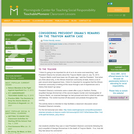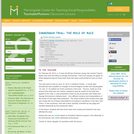The terrorist attacks on September 11, 2001 marked a turning point in American policies toward immigration, privacy, and the ways South Asian Americans were perceived and treated after. Students will learn about the various ways South Asian Americans have experienced disproportionate and targeted racial profiling, hate crimes, and other acts of discrimination. They will also learn about the ways in which South Asian Americans responded to the 9/11 attacks and the aftermath, providing insight into how immigrant communities are often caught between the pressures of representing themselves in a way that appeals to the expectations of the status quo, and the desire to practice their culture and traditions in a way that allows them to fully embrace their cultural and ancestral identity.
2021 Social Science Standards Integrated with Ethnic Studies:
Civics and Government: 5.1, 6.4, 7.5, 8.8, 8.9, HS.2, HS.6, HS.9, HS.10, HS.11
Geography: 5.13, HS.51
Historical Knowledge: 5.22, 6.20, 6.21, 8.22, 8.25, HS.52, HS.64, HS.65
Historical Thinking: 5.25, 7.25, 8.31, 8.32, HS.68
Social Science Analysis: 5.26, 5.27, 5.28, 6.24, 6.26, 6.27, 7.27, 7.29, 8.33, 8.34, 8.36, HS.72, HS.73, HS.74, HS.75, HS.76, HS.78









